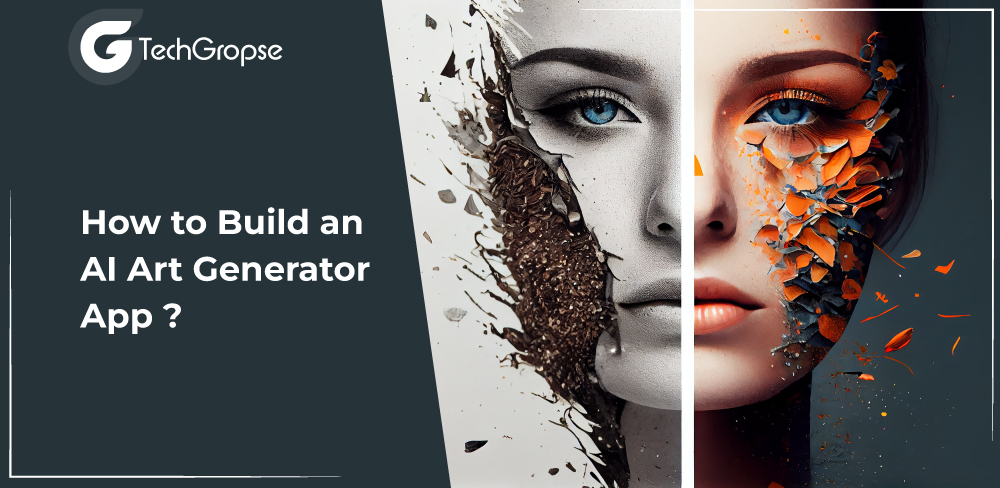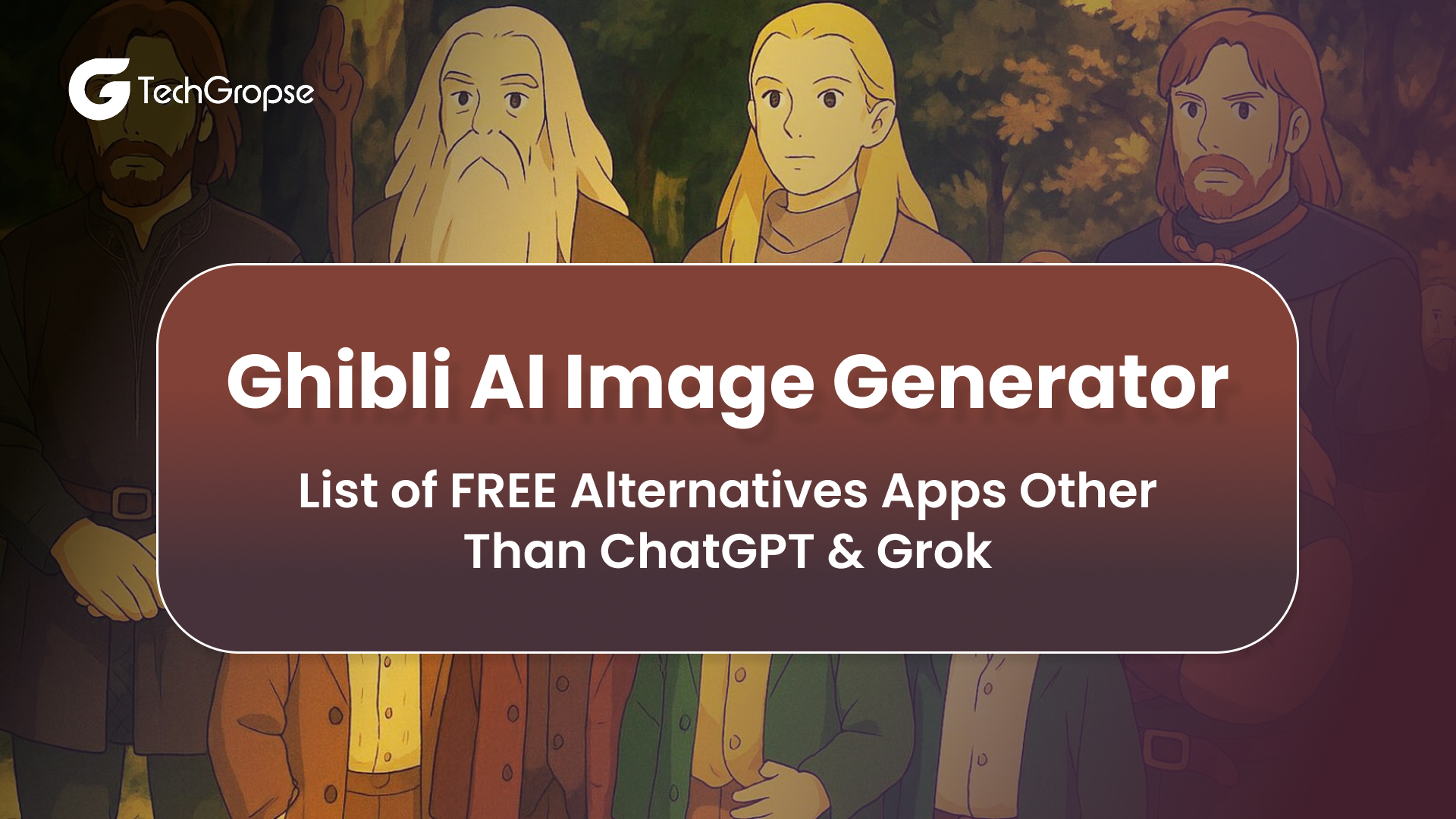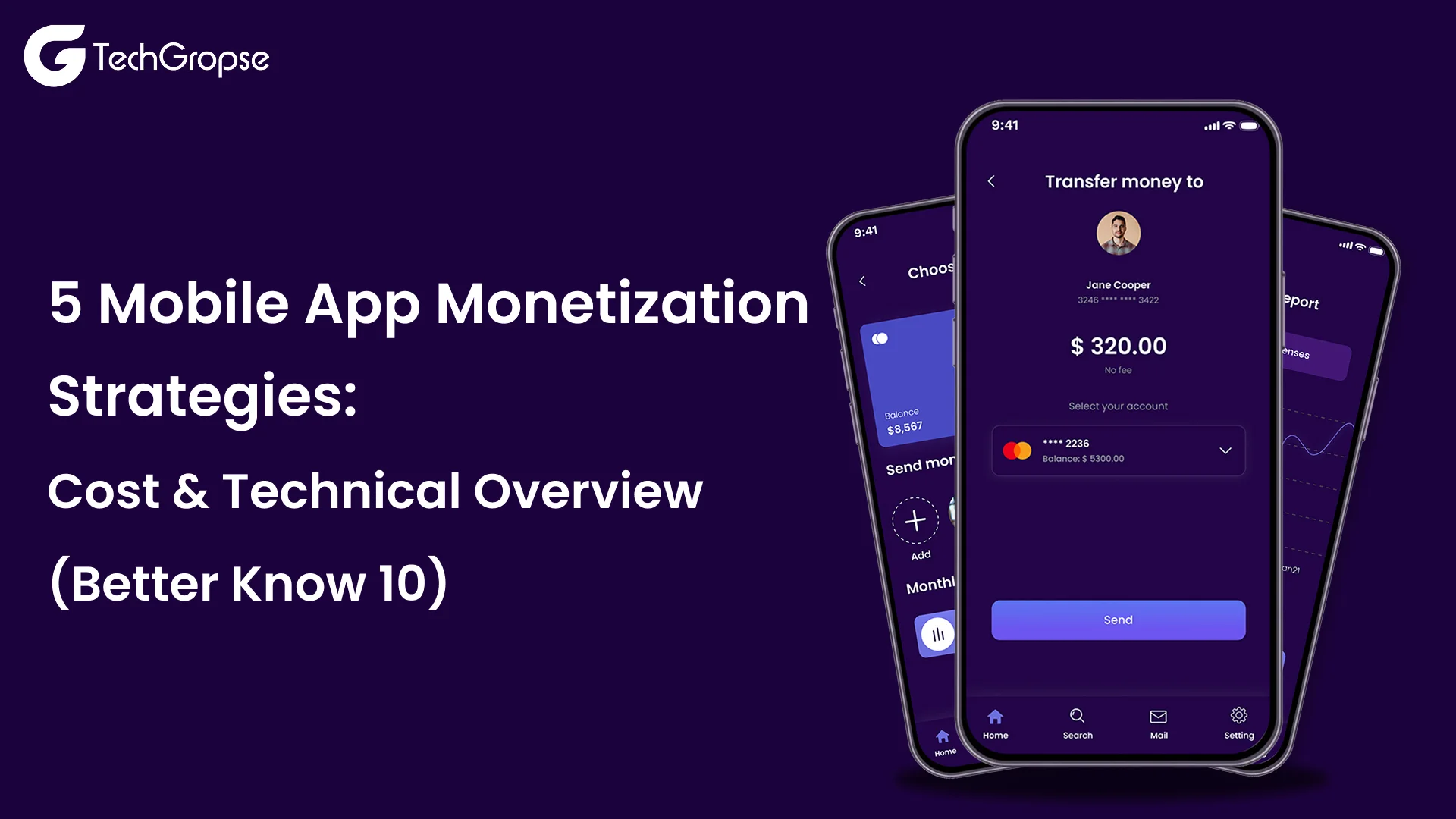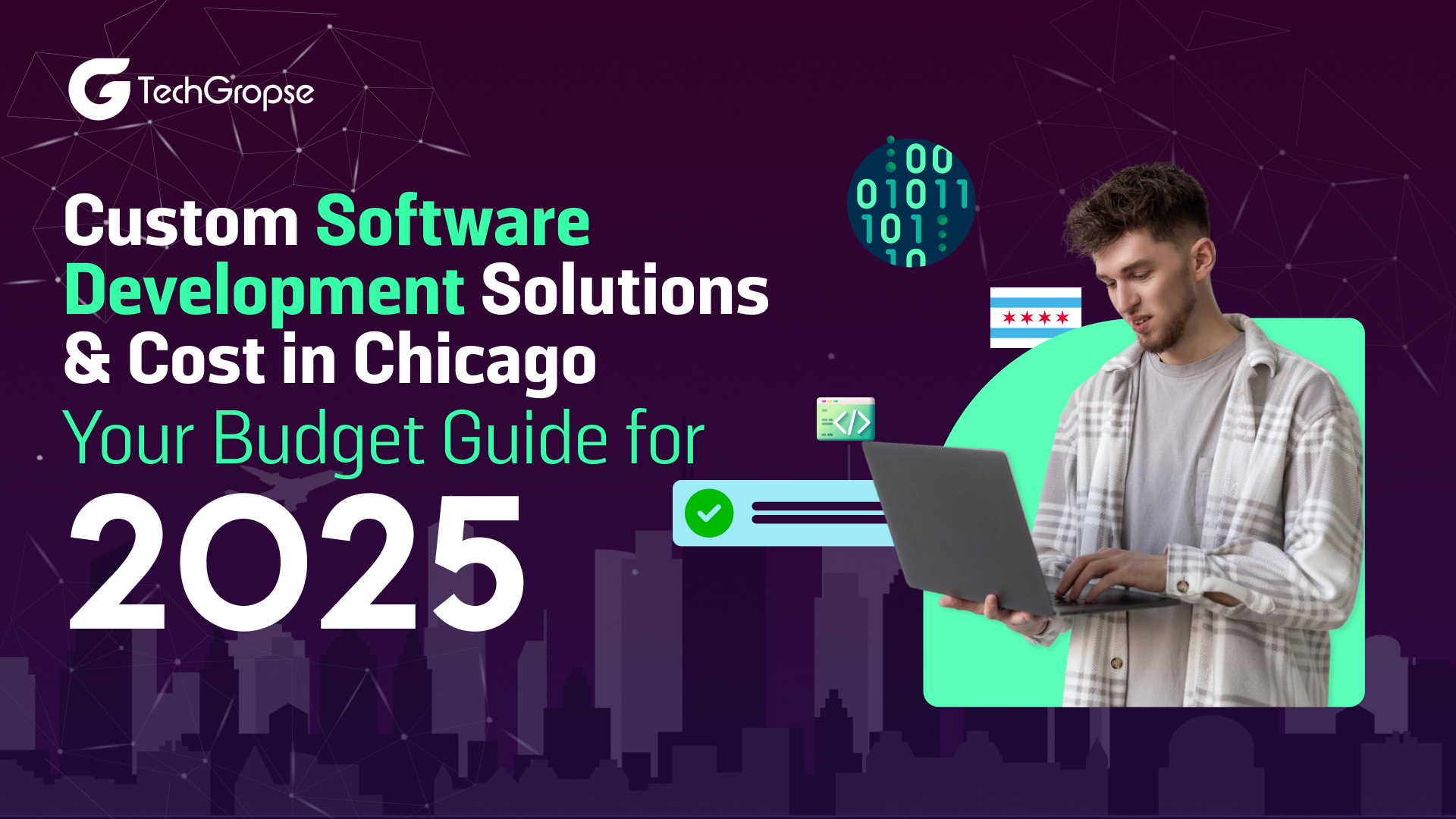Tired of struggling with traditional art tools? Say goodbye to tricky art tools and feeling stuck in your creativity. The AI Art Generator App is here to make art awesome, easy and fun. Let’s start to build an AI Art generator app with us.
Imagine turning your ideas into awesome art with just a tap – no more struggling. It’s like having a helpful friend who understands your style and makes creating art a breeze.
The AI Art Generator App is not just a tool; it’s your ticket to a world where art is easy, exciting, and uniquely yours. After Choosing AI for creating mesmerizing art you will feel it just looking like a wow.
The AI Art Generator App is tailored to your preferences, adapting its algorithms to match your artistic flair.
It eliminates the need for extensive technical skills, allowing you to explore limitless possibilities without the complexities that often accompany traditional art creation.
By the end, you will have a comprehensive understanding of how to build an AI art Generator App and unlock the potential of AI in the world of art.
Let’s turn your creative dreams into colourful reality!
What is an AI Art Generator App?
If you have ever wished you could create beautiful pieces of art with just the click of a button, then AI art generator apps are here to make your dreams come true.
AI Art Generator App development utilizes the power of Artificial Intelligence (AI) to generate unique and stunning artworks that range from paintings to digital illustrations.
Whether you are an aspiring artist or someone looking to explore the world of digital art, the AI Art Generator App provides a user-friendly platform that simplifies the artistic process.
It is a tool designed to break down barriers, making art accessible, enjoyable, and visually impressive for users of all skill levels.
How AI is Shaping the Future of Creativity?
The art world has always been a hub for creativity, but the rise of AI has opened up a whole new realm of possibilities.
AI technology has revolutionized the way we create and appreciate art, pushing the boundaries of imagination and challenging traditional artistic norms.
Now, artists, designers, and enthusiasts can leverage AI art generator apps to explore new artistic styles, experiment with different techniques, and even discover their unique artistic voice.
With AI’s ability to analyze patterns and learn from vast amounts of data, these apps can generate artwork that is both captivating and thought-provoking.
Understanding AI in Art Generation
Before delving into the development process to build an AI Art Generator app, it is crucial to grasp the fundamentals of AI in the context of art generation.
The global market for AI art generators is poised for significant growth, with an expected Compound Annual Growth Rate (CAGR) of 17.4%.
Starting at $29 million in 2023, this innovative sector is projected to reach a substantial value of $91 million by 2030.
The generative AI market has surged past the $10 billion mark, and projections indicate a remarkable trajectory, anticipated to soar beyond $118 billion by the year 2032.
At its core, AI utilizes machine learning and neural networks to understand patterns, which can be harnessed to create unique visual experiences.
Step to Build an AI Art Generator App
AI Art Generator Apps have become a compelling medium for both aspiring artists and enthusiasts to explore the limitless possibilities of digital creativity.
You must consult with an AI Art Generator App Development Company to build an AI Generator app.
Step 1. Planning and Conceptualization
Begin by clearly defining the objectives of your AI Art Generator App. Determine whether it’s tailored for casual users seeking creative expression or professionals looking for a tool to enhance their workflow. Understand whether it is for casual users or professional artists, and define the scope of features and functionalities accordingly.
Step 2. Identify Target Audience
Analyze your potential users. Hire Android app developers who have advanced skill levels, and preferences. Study existing AI art apps to identify strengths, weaknesses, and unique features. It will help you position your app uniquely in this competitive market.
Ask some essential questions yourself below question to build an AI Art Generator app:
- Who will be your target audience?
- Who will be your strong competitors in this competitive world?
- What tech stack & features would you want to include?
- How will you generate revenue from this?
- What expertise will you need to build an app like MidJourney?
Step 3. Feature Set Definition
Based on your objectives and user needs, define a comprehensive set of features for your app. This may include:
- User-Friendly Canvas
- Style Selection
- Real-Time Rendering
- Diverse Style Library
- Customization Options
- User Authentication
- Social Sharing
- Augmented Reality (AR) Integration (Future Enhancement)
Step 4. User Experience (UX) Design
Consult with custom AI art generator app development to craft an intuitive and engaging user experience. Prioritize simplicity in navigation, ensuring users can interact with the app. Consider accessibility features for a broader user base.
Step 5. Technical Requirements
Choose the technology stack for your app. Integrate the trained AI model seamlessly into your app’s architecture. Ensure real-time processing and responsiveness for an interactive user experience. Initiates front-end development by implementing the user interface. Integrate the AI model, allowing users to interact with the app effortlessly. Consider cross-platform compatibility for wider reach. AI app development company developed the back-end to handle server-side processes. It includes AI model integration, user authentication, and database interactions. Choose a robust framework for efficient data processing.
| Technical Requirement | Description |
| Programming Language | Python (for AI model development) |
| AI Frameworks | TensorFlow or PyTorch (for building and training neural networks) |
| Web/App Development | HTML, CSS, JavaScript (for front-end development) |
| Back-End Framework | Django or Flask (for server-side processing) |
| Database | PostgreSQL or MongoDB (for storing user data and preferences) |
| Cloud Services | Azure, AWS, or Google Cloud |
| Image Processing Library | OpenCV (for image recognition and manipulation) |
| User Authentication | OAuth or JWT (for secure user login) |
| Security Measures | Encryption protocols (SSL/TLS) for data security |
| Cross-Platform Compatibility | React Native (for mobile app) or Vue.js (for web app) |
| Version Control | Git (for code versioning and collaboration) |
| Hosting Solution | Heroku or AWS Elastic Beanstalk (for app deployment) |
These technical requirements form the foundation to build an AI Art Generator App, ensuring a seamless and secure user experience.
Step 6. Develop the AI Model
Select an appropriate model architecture, based on Convolutional Neural Networks. Train the model using a multiple dataset of artistic styles, implementing data augmentation for improved generalization.
- Auto Regressive Model
- Style Transfer Model
- Generative Adversarial Network
- Variational Autoencoder
- CNN
Step 7. Testing and Quality Assurance
Conduct thorough testing, including unit testing, user testing, and performance testing. Contact a mobile app development company that addresses bugs promptly and refines the app based on user feedback for a polished final product.
| Testing Aspect | Description |
| Unit Testing | Verify individual components of the app to ensure they function correctly. |
| Performance Testing | Evaluate the app’s responsiveness, scalability, and overall performance under various conditions. |
| Security Testing | Conduct tests to identify vulnerabilities and ensure robust encryption protocols for data security. |
| Compatibility Testing | Ensure the app functions seamlessly across different devices, browsers, and platforms. |
| Cross-Browser Testing | Validate the app’s performance on various web browsers to ensure consistent user experience. |
| Regression Testing | Verify that new updates or features do not negatively impact existing functionalities. |
| Automation Testing | Implement automated testing tools (e.g., Selenium) to streamline repetitive testing processes. |
| Load Testing | Evaluate the app’s performance under heavy user loads to identify potential bottlenecks. |
| Bug Tracking and Fixing | Employ a bug-tracking system to log, prioritize, and address identified issues efficiently. |
These testing and quality assurance measures ensure the AI art generator app is not only technically sound but also provides a positive and reliable experience for users.
Step 8. Deployment and Hosting
To build an AI Art Generator app choose a reliable hosting solution to ensure the app’s availability and responsiveness. Implement security measures such as encryption protocols and conduct regular audits.
Step 9. Marketing and Launch
Develop a distinctive brand identity for your app. Implement effective promotion strategies through social media, influencer collaborations, and online marketing. Hire mobile app developers to launch on app stores following guidelines.
By following these steps, you will build an AI Art Generator App that not only leverages advanced technology but also provides an engaging and user-friendly platform for creative expression.
How Does An AI Art Generator App Work?
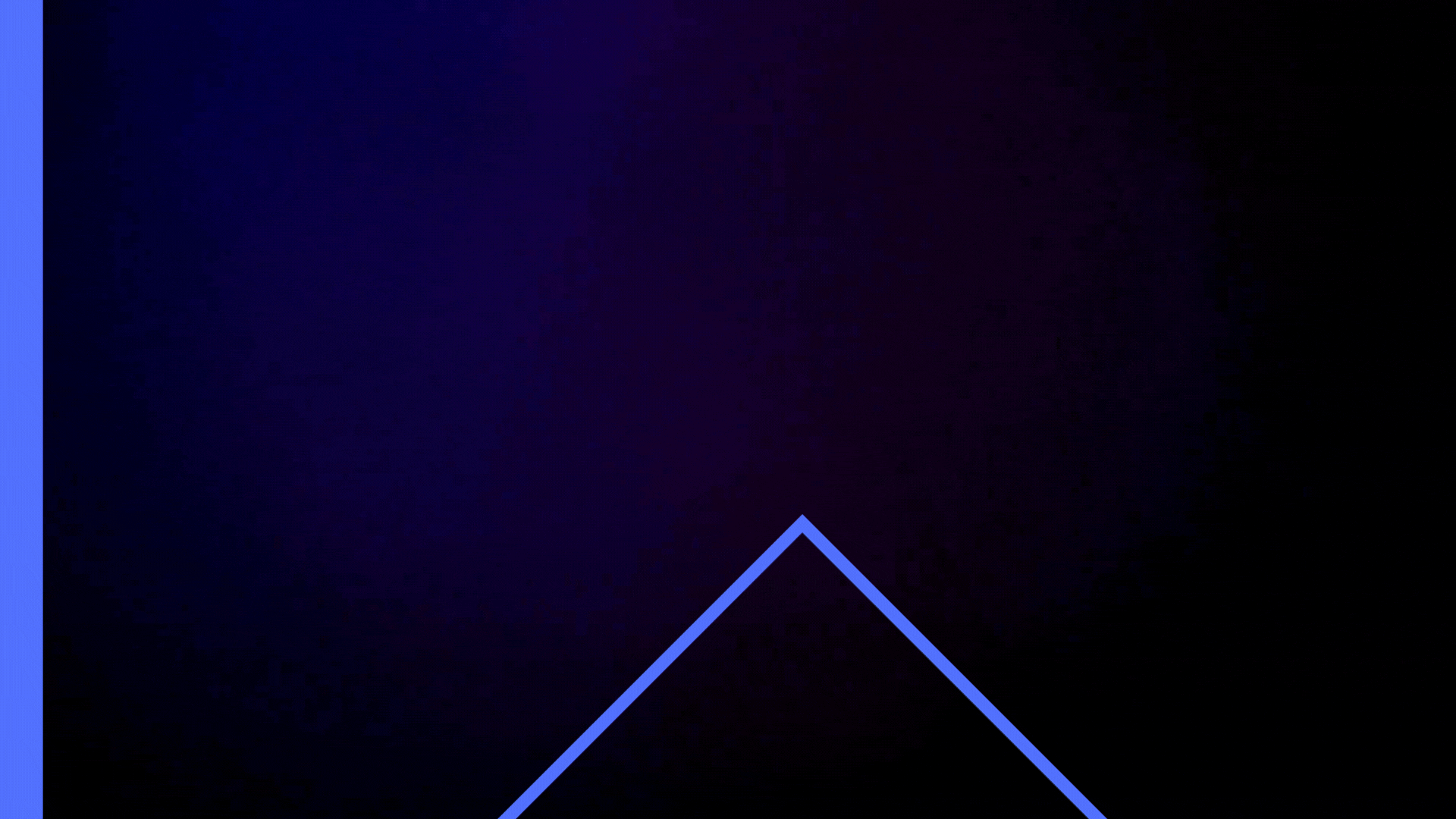
If you want to build an AI Art Generator app it is necessary how the Art app works. An AI Art Generator App that operates on the principles of artificial intelligence, utilizing advanced algorithms to transform creative concepts into visually striking artworks.
Here is a simplified breakdown of how these apps typically work:
1. Image Recognition
The app begins by utilizing image recognition algorithms to understand and analyze the input provided by the user. It involves breaking down the elements of the image and recognizing patterns, shapes, and colours.
2. Style Transfer
One of the key techniques employed is style transfer. The AI model has been trained on a diverse set of artistic styles, and it combines the recognized elements from the user’s input with the characteristics of the chosen artistic style.
3. Neural Networks:
The core of the AI Art Generator is often a neural network. Neural networks are designed to mimic the way the human brain operates, with layers of interconnected nodes processing and transforming information. In the context of art generation, these networks learn and adapt based on the patterns they identify in the training data.
4. Training the Model
Before deployment, the AI model undergoes a training phase where it learns from an extensive dataset of various art styles. This training equips the model with the ability to understand and replicate these styles when generating new artwork.
5. User Interaction
The user interacts with the app by providing input, such as selecting a base image or specifying preferences for the desired artistic style. This input serves as the foundation for the AI model to generate a unique piece of art.
6. Real-Time Rendering
The app’s AI model processes the user input in real time, applying the learned artistic styles and generating a new visual output. The speed and efficiency of this process contribute to the app’s interactive and dynamic user experience.
7. Feedback Loop
Many AI Art Generator Apps incorporate a feedback loop, allowing users to provide feedback on the generated artwork. This feedback can be used to refine and improve the AI model over time, enhancing its ability to meet user expectations.
8. Accessibility and User-Friendly Interface
The final artwork is presented to the user through an intuitive and user-friendly interface. Users can explore different styles, customize parameters, and, in some cases, actively participate in the creative process.
Understand the Must-Have Features of the AI Art Generator App
To elevate the AI Art Generator App to a more advanced and upgraded level, hire dedicated developers who consider incorporating the following features:
| Advanced Feature | Description |
| Augmented Reality (AR) Integration | Implement AR features for users to experience their artwork in the real world through AR. |
| Collaborative Art Creation | Enables real-time collaboration, allowing users to work on art projects collectively. |
| Advanced Style Transfer | Enhance style transfer with more advanced algorithms for a broader range of artistic styles. |
| Image-to-Text Descriptions | Implement image recognition to generate textual descriptions, enhancing accessibility. |
| Dynamic Style Adjustment | Allows users to dynamically adjust style intensity and characteristics in real-time. |
| Generative Adversarial Networks (GANs) | Integrate GANs for a dynamic and evolving artistic generation process based on user input. |
| Art Market Integration | Create a marketplace within the app for users to showcase, sell, or purchase AI-generated artwork. |
| Multi-Modal Art Creation | Incorporate multi-modal features for experimenting with visual and auditory elements. |
| AI-Generated Music Integration | Integrate AI-generated music to accompany and enhance the overall creative experience. |
| Personalized Art Recommendations | Utilize machine learning to provide users with personalized suggestions based on preferences. |
| Virtual Art Exhibitions | Establish virtual spaces for users to curate and exhibit their AI-generated artwork. |
| Advanced AI Collaboration | Allow users to collaborate with an advanced AI co-creator for dynamic and interactive artwork. |
| Blockchain Integration for Authenticity | Use blockchain to ensure authenticity and ownership of AI-generated artwork. |
| Interactive Storytelling Integration | Introduce interactive storytelling elements for creating visual narratives with evolving storylines. |
These advanced features push the boundaries of creative expression, providing users with a cutting-edge and dynamic AI Art Generator App experience.
How Much Does It Cost to Build an AI Art Generator App?
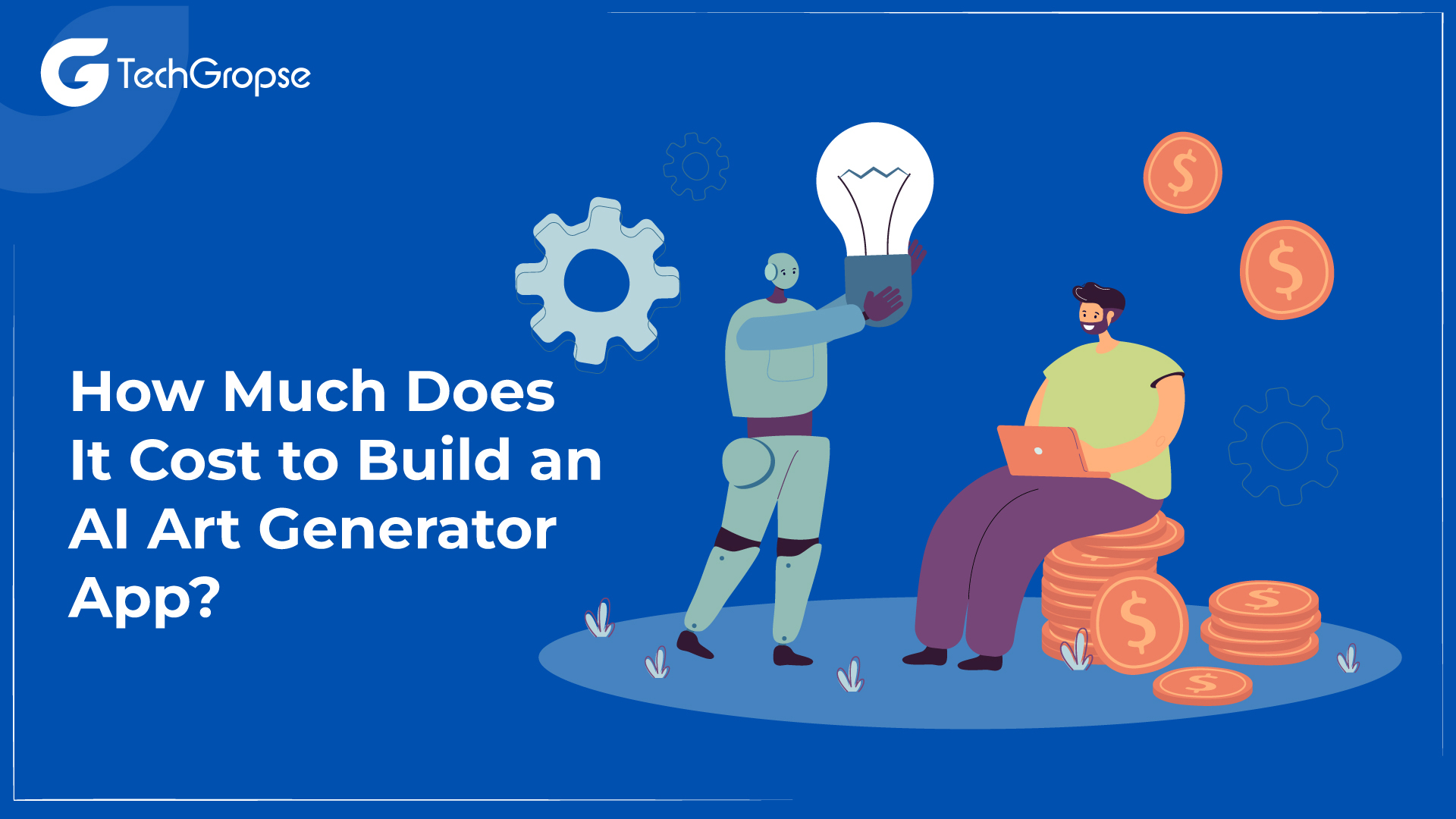
| Development Aspect | Basic Cost Range | Medium Cost Range | Advanced Cost Range |
| Development Time | 2-4 months | 4-8 months | 8-12+ months |
| Basic Features Development | $50,000 – $100,000 | Included in Medium | Included in Advanced |
| Advanced Features Development | Not applicable | $50,000 – $100,000 | $100,000 and above |
| Technology Stack and Infrastructure | $20,000 – $40,000 | $40,000 – $80,000 | $80,000 and above |
| Design and User Experience | $10,000 – $20,000 | $20,000 – $40,000 | $40,000 and above |
| AI Model Development | $20,000 – $40,000 | $40,000 – $80,000 | $80,000 and above |
| Security Measures | $10,000 – $20,000 | $20,000 – $40,000 | $40,000 and above |
| Testing and Quality Assurance | $10,000 – $20,000 | $20,000 – $40,000 | $40,000 and above |
| Integration with Third-Party Services | $5,000 – $10,000 | $10,000 – $20,000 | $20,000 and above |
| Regulatory Compliance | $5,000 – $10,000 | $10,000 – $20,000 | $20,000 and above |
| Project Management | $10,000 – $20,000 | $20,000 – $40,000 | $40,000 and above |
| Maintenance and Updates | $10,000 – $20,000 annually | $20,000 – $40,000 annually | $40,000 and above annually |
| Marketing and Launch | $10,000 – $20,000 | $20,000 – $40,000 | $40,000 and above |
| Total Cost | $40,000 – $80,000 | $80,000 – $150,000 | $150,000+ |
Please note that these are approximate cost ranges, and actual mobile app development cost may vary based on specific project requirements, customisation, and the chosen development approach.
It is advisable to collaborate with an Android app development company for a detailed and accurate cost estimate tailored to the project’s goals and scope.
Have a Quick Look at the 10 Popular AI Art Generator Apps
| AI Art Generator App | Rating | Downloads (Approx.) | Highlight Point |
| DeepArt | 4.5 | 1 million+ | Deep neural networks for detailed artwork |
| Prisma | 4.5 | 100 million+ | Artistic filters inspired by famous artists |
| Artisto | 4.4 | 10 million+ | Video art effects with deep learning |
| NeuralStyler | 4.3 | 500,000+ | Transfer styles from famous artworks |
| Pikazo | 4.2 | 100,000+ | Create unique styles using deep neural nets |
| Artbreeder | 4.6 | 500,000+ | Blend and generate art through evolution |
| Vinci | 4.5 | 5 million+ | Turn photos into artwork with various styles |
| MyIdol | 4.0 | 1 million+ | Create 3D avatars with AI-generated art |
| Brushstroke | 4.2 | 500,000+ | Transform photos into paintings |
| Artful | 4.3 | 100,000+ | AI-powered filters for artistic effects |
Ready to Build an AI Art Generator App?
When it comes to build an AI Art Generator App, it is exciting possibilities for artists, enthusiasts, and anyone interested in exploring the creative potential of artificial intelligence.
Whether you want to create art with a simple tap or dig deeper into the algorithms behind the scenes, building an AI Art Generator App allows you to push the boundaries of creativity and merge art with technology.
Embrace the potential of AI and embark on a journey to change the art world with your own AI Art Generator App.
FAQ: How to Build an AI Art Generator App
1. Can I use any programming language to build an AI Art Generator App?
You can use various programming languages to build an AI Art Generator App. However, some languages and frameworks are more commonly used due to their strong support for machine learning and deep learning libraries. Python, with libraries like
2. Do I need a large dataset of artwork to train the AI model?
While having a large dataset can potentially improve the quality and diversity of generated art, it is not always necessary, especially when starting. You can begin with a smaller dataset and gradually increase its size as you iterate and improve your AI model.
3. Can I customize the generated artwork using an AI Art Generator App?
Yes, many AI Art Generator Apps offer customization options to allow users to influence the style, colour palette, or other aspects of the generated artwork. These features enable users to create unique and personalized pieces of art using the AI model as a starting point.
4. Are there any ethical considerations when building and using AI Art Generator Apps?
Ethical considerations are important when working with AI Art Generator Apps. It is crucial to ensure that the app and its generated content respect copyright laws and intellectual property rights.

Hello All,
Aman Mishra has years of experience in the IT industry. His passion for helping people in all aspects of mobile app development. Therefore, He write several blogs that help the readers to get the appropriate information about mobile app development trends, technology, and many other aspects.In addition to providing mobile app development services in USA, he also provides maintenance & support services for businesses of all sizes. He tried to solve all their readers’ queries and ensure that the given information would be helpful for them.






